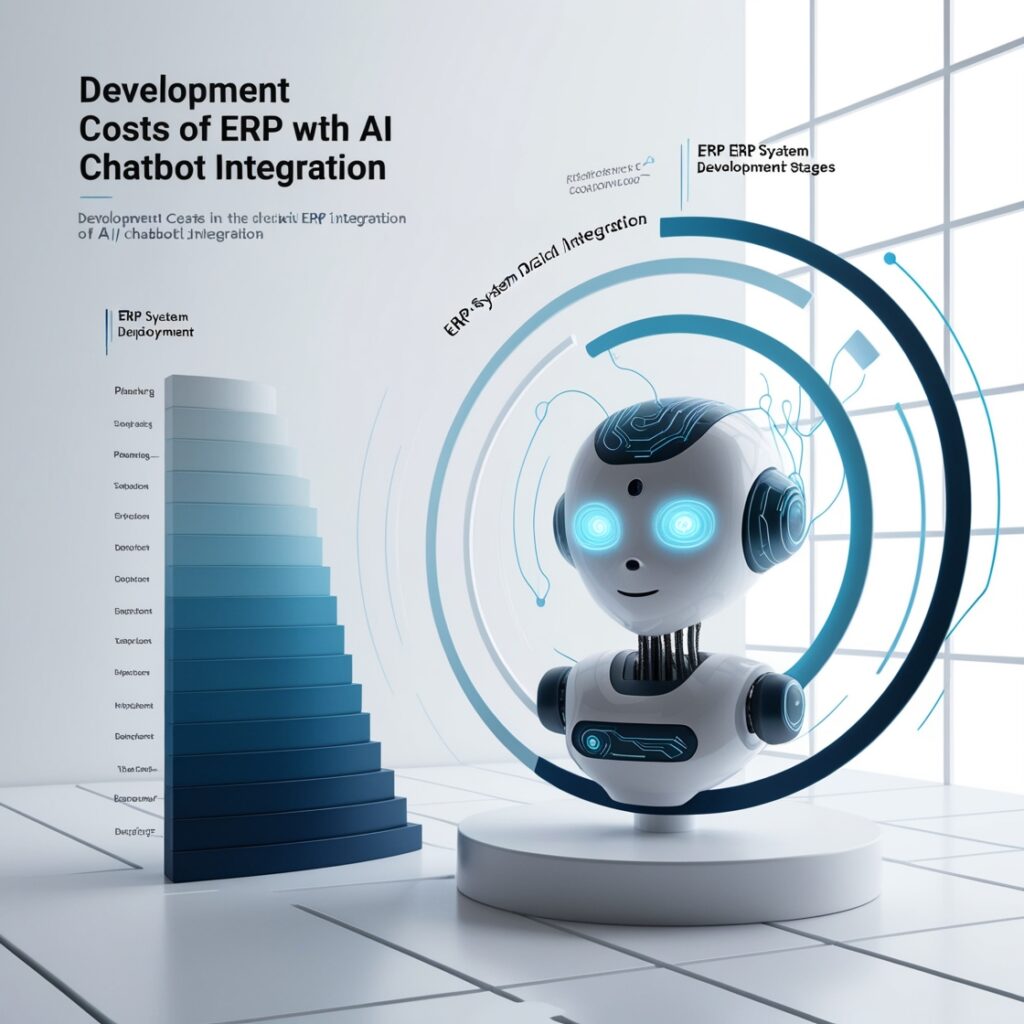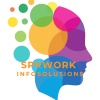Enterprise Resource Planning (ERP) systems are designed to integrate the core business processes of an organization. These systems help in managing everything from inventory and supply chain to human resources and customer relationships.
Traditionally, ERP systems have been robust tools, but their user interfaces have often been complex, and interactions can be tedious. Over the past few years, the integration of artificial intelligence (AI) and machine learning has transformed ERP platforms into more intuitive and effective systems. One such advancement is the integration of AI-powered chatbots.
An AI chatbot embedded in an ERP system can help automate workflows, provide real-time assistance, and make decision-making more data-driven. In this article, we will cover the key use cases of AI chatbots within ERP systems, the features that these chatbots offer, and how much it might cost to develop and implement AI chatbot development technology in your organization.
Use Cases of AI Chatbot in ERP Systems

AI chatbots in ERP systems automate tasks such as customer service, inventory management, financial reporting, and procurement, enhancing efficiency and decision-making.
- Customer Service Automation AI chatbots within ERP systems can handle a wide variety of customer service tasks, including answering FAQs, processing orders, providing shipping information, and even resolving simple technical issues. By integrating these chatbots with your ERP, businesses can significantly reduce the load on human customer service agents and improve response times.
For instance, when a customer places an order, the AI chatbot can automatically retrieve data from the ERP system, track inventory levels, and provide real-time updates on order status. This reduces the time spent by human staff on manual tasks and improves customer satisfaction by offering instant responses. - Inventory Management AI chatbots can play a critical role in inventory management. By interfacing with the ERP system, the chatbot can provide real-time inventory updates, track stock levels, and send alerts when certain products run low. Employees can interact with the chatbot to request inventory reports or inquire about specific stock quantities.
In cases of stockouts or overstock situations, the chatbot can notify relevant personnel or even trigger reordering processes based on pre-set rules. These automated processes not only improve efficiency but also reduce human error. - Employee Assistance AI chatbots can provide employees with quick access to internal systems, policies, and guidelines. For example, an employee who needs to submit a leave request or update their personal information can use the chatbot to access the necessary forms and process the request seamlessly. The chatbot can also assist in onboarding new employees by providing them with vital information about company procedures and benefits.
- Financial Operations and Reporting AI chatbots can assist with financial tasks by pulling data from the ERP system and generating reports. These reports can include balance sheets, profit and loss statements, cash flow analysis, and more. Employees can request reports directly from the chatbot, which can deliver up-to-date financial information in an instant, saving time spent navigating complex ERP dashboards.
Additionally, AI chatbots can assist in accounts payable and receivable functions. By tracking payments, reminding employees of outstanding invoices, and answering financial queries, chatbots can automate tasks that typically require human oversight. - Procurement and Supplier Management Managing suppliers and procurement processes can be time-consuming. AI chatbots can automate many of these tasks by interacting with the ERP system to track order histories, create purchase orders, and even communicate with suppliers directly. They can automatically pull up past invoices, send order confirmations, and track delivery times.
For example, if the chatbot detects a discrepancy in pricing or a delay in delivery from a supplier, it can notify procurement managers, who can then decide the best course of action without spending time manually reviewing past interactions. - Sales and Lead Generation An AI chatbot integrated with an ERP system can support the sales team by offering insights into customer behavior, potential leads, and product preferences. It can track conversations, analyze data from past interactions, and provide real-time suggestions for upselling or cross-selling opportunities.
Sales representatives can also use chatbots to check the status of orders or customer accounts, process quotes, and offer tailored recommendations based on the customer’s purchasing history. This leads to a more effective sales process with minimal manual input.
Features of AI Chatbots in ERP Systems
AI chatbots in ERP systems offer features like natural language processing, real-time data integration, task automation, predictive analytics, and multi-channel support for enhanced user interaction and operational efficiency.
- Natural Language Processing (NLP):- NLP allows AI chatbots to understand and process human language. This capability enables chatbots to interact with users in a conversational manner, making it easy for employees and customers to ask questions, request data, or perform tasks simply by typing natural commands. NLP-based chatbots can handle multiple languages, regional dialects, and even industry-specific terminology.
- Data Integration:- One of the most significant features of AI chatbots in ERP systems is their ability to access, retrieve, and interact with the vast amount of data stored in the ERP system. Whether it’s pulling up inventory levels, processing financial transactions, or generating reports, chatbots are directly connected to the backend of the ERP, ensuring real-time, accurate information is always available.
- Automation of Repetitive Tasks:- Chatbots excel in automating routine, repetitive tasks that would otherwise require human intervention. For instance, a chatbot can automatically update records, send reminders for overdue tasks, and provide automatic responses to common employee or customer inquiries. By offloading these tasks, businesses can free up time for staff to focus on more complex and value-added activities.
- Machine Learning and Predictive Analytics:- Machine learning algorithms allow chatbots to improve over time based on user interactions and data analysis. These chatbots can predict potential issues before they arise, such as identifying procurement shortages or financial discrepancies. They can also offer predictive insights, like forecasting sales trends or predicting the likelihood of late payments, which helps in proactive decision-making.
- Multi-Channel Support:- AI chatbots integrated with ERP systems can interact with users across various platforms. Whether through web chat, email, SMS, or even social media, these chatbots offer flexibility in how employees and customers access the system. Multi-channel support ensures that users can engage with the ERP system regardless of the platform they are most comfortable using.
- Real-Time Reporting and Dashboards:- One of the key advantages of AI chatbots is the ability to provide real-time insights. They can generate and display dashboards showing metrics such as sales performance, inventory levels, and financial data. Instead of having to sift through complex ERP reports manually, users can ask the chatbot for specific data points, which it will provide instantly.
Development Costs of ERP with AI Chatbot Integration

The cost of developing and implementing an AI chatbot within an ERP system can vary significantly depending on several factors, including the complexity of the ERP system, the features of the chatbot, and the development approach. Here are the key cost considerations:
- ERP System Type:- The complexity and size of the ERP system play a crucial role in determining the cost. Custom-built ERP systems require a more sophisticated chatbot integration, while cloud-based or SaaS ERP solutions may offer simpler integration processes. Large enterprises with complex workflows will need more advanced AI chatbots with specialized capabilities, which can raise costs.
- Chatbot Features:- The more advanced features you incorporate into the chatbot, the higher the development costs will be. A basic chatbot that answers simple queries and processes straightforward tasks will cost less to build than one that integrates machine learning, predictive analytics, and multi-channel support. Features like NLP, voice recognition, and AI-powered decision-making also add to the overall cost.
- Development Team:- Hiring skilled developers and AI specialists is another cost factor. Developing an AI chatbot for an ERP system requires knowledge of AI, machine learning, and integration with third-party platforms. Companies can either hire in-house developers or work with a third-party vendor specializing in AI and ERP solutions. Outsourcing development is typically more affordable but can introduce challenges in quality control and communication.
- Customization and Integration:- The level of customization required to tailor the chatbot to your ERP system also affects the cost. Off-the-shelf AI chatbot solutions are less expensive but may not be able to address all the specific needs of your organization. On the other hand, custom solutions that integrate deeply with existing workflows and databases will require more development time and, consequently, higher costs.
- Ongoing Maintenance and Updates:- AI chatbots require continuous monitoring and periodic updates to ensure they stay effective. Whether it’s refining their machine learning models, improving their ability to handle new customer queries, or adding new features, maintenance costs should be factored in. Depending on the complexity of the solution, ongoing costs for updates and support can range from a few thousand dollars to tens of thousands per year.
- Licensing and Software Costs:- If your ERP solution requires specific software or AI libraries, licensing fees may be another component of the total cost. Additionally, cloud-hosted ERP systems may have subscription fees that contribute to the overall budget.
Cost Estimates
Cost estimates for integrating AI chatbots into ERP systems range from $15,000 for small businesses to over $500,000 for large enterprises, depending on complexity and customization.
- Small Business ERP with Basic AI Chatbot:
For small organizations or businesses with simpler ERP systems, the cost of implementing a basic AI chatbot may range between $15,000 and $50,000. This would typically cover a small, pre-built chatbot that can handle routine tasks such as customer service inquiries and basic reporting. - Medium Business ERP with Custom AI Chatbot:
For medium-sized businesses with more complex ERP systems, the cost can range from $50,000 to $200,000. This includes custom chatbot development, machine learning capabilities, multi-channel integration, and full ERP system integration. - Enterprise-Level ERP with Advanced AI Chatbot:
Large enterprises with complex ERP needs may face costs from $200,000 to $500,000 or more. These solutions include advanced AI features like NLP, predictive analytics, and real-time decision-making capabilities. They also involve significant development and integration efforts.
Conclusion
The integration of AI chatbots within ERP systems provides businesses with a powerful tool for automating tasks, improving user interactions, and leveraging real-time data for better decision-making. With use cases spanning customer service, inventory management, financial operations, and employee assistance, AI chatbots can greatly enhance the value of an ERP system.
While the development costs can vary widely depending on the complexity of the project, the potential benefits far outweigh the initial investment. By automating repetitive tasks, improving access to critical data, and offering personalized assistance, businesses can significantly improve efficiency, reduce operational costs, and increase overall productivity.
As AI technology continues to evolve, the cost of integrating chatbots into ERP systems will likely decrease, making it an attractive option for businesses of all sizes looking to modernize their operations and stay ahead in an increasingly competitive market.
